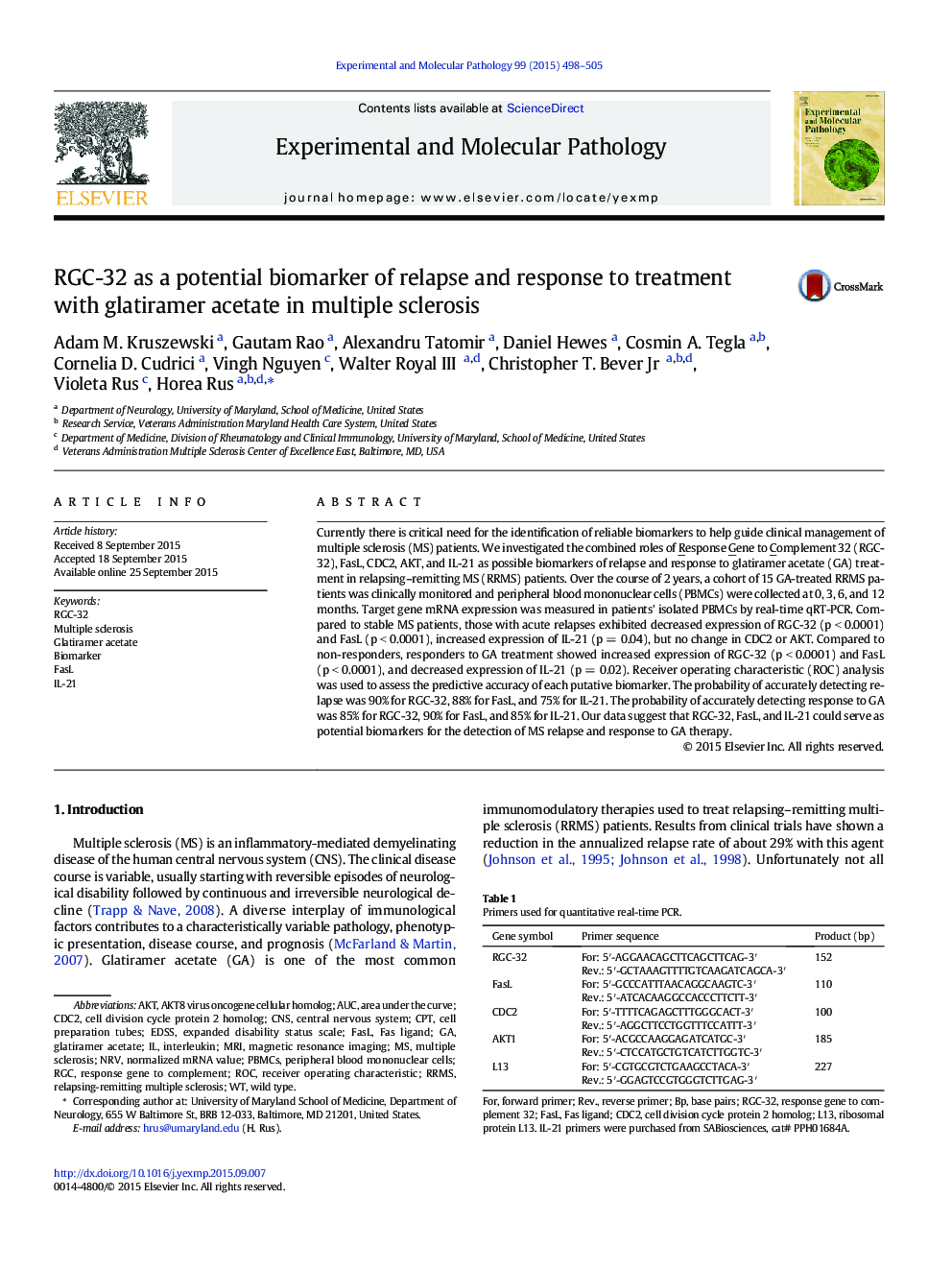| کد مقاله | کد نشریه | سال انتشار | مقاله انگلیسی | نسخه تمام متن |
|---|---|---|---|---|
| 2774887 | 1152299 | 2015 | 8 صفحه PDF | دانلود رایگان |

• The role of RGC-32 as a biomarker of response to treatment was investigated.
• RGC-32 was found to be a biomarker of response to glatiramer acetate treatment.
• RGC-32 was found to be a biomarker of clinical activity in multiple sclerosis.
• FasL and IL-21 were also found to be biomarkers of response to GA treatment.
Currently there is critical need for the identification of reliable biomarkers to help guide clinical management of multiple sclerosis (MS) patients. We investigated the combined roles of Response Gene to Complement 32 (RGC-32), FasL, CDC2, AKT, and IL-21 as possible biomarkers of relapse and response to glatiramer acetate (GA) treatment in relapsing–remitting MS (RRMS) patients. Over the course of 2 years, a cohort of 15 GA-treated RRMS patients was clinically monitored and peripheral blood mononuclear cells (PBMCs) were collected at 0, 3, 6, and 12 months. Target gene mRNA expression was measured in patients' isolated PBMCs by real-time qRT-PCR. Compared to stable MS patients, those with acute relapses exhibited decreased expression of RGC-32 (p < 0.0001) and FasL (p < 0.0001), increased expression of IL-21 (p = 0.04), but no change in CDC2 or AKT. Compared to non-responders, responders to GA treatment showed increased expression of RGC-32 (p < 0.0001) and FasL (p < 0.0001), and decreased expression of IL-21 (p = 0.02). Receiver operating characteristic (ROC) analysis was used to assess the predictive accuracy of each putative biomarker. The probability of accurately detecting relapse was 90% for RGC-32, 88% for FasL, and 75% for IL-21. The probability of accurately detecting response to GA was 85% for RGC-32, 90% for FasL, and 85% for IL-21. Our data suggest that RGC-32, FasL, and IL-21 could serve as potential biomarkers for the detection of MS relapse and response to GA therapy.
Figure optionsDownload as PowerPoint slide
Journal: Experimental and Molecular Pathology - Volume 99, Issue 3, December 2015, Pages 498–505